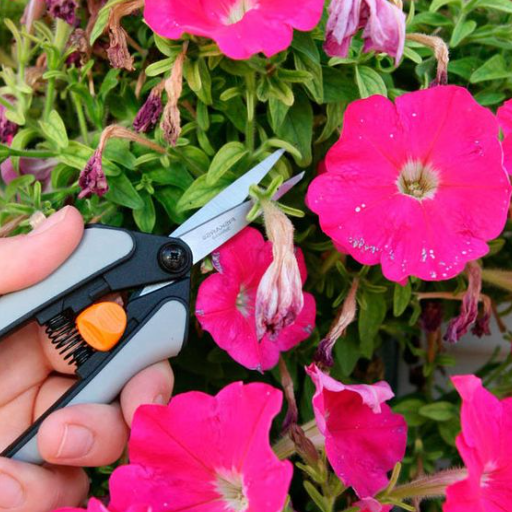Rosemary is a highly versatile and aromatic herb appreciated for its use in cooking, in healing, or even in decoration. Grown indoors on a sunny windowsill or outdoors in the garden, if well taken care of, rosemary will return the favor with growth. Here is a complete guide on everything you need to know about rosemary plant care and nurturing a healthy rosemary plant, from understanding ideal growing conditions to watering, pruning, and handling common problems. Seasoned garden practitioners and new-found gardeners alike will benefit from this post, which presents step-by-step advice to produce healthy rosemary plants ready to flavor and lend grace to your home or garden.
Rosemary Plant Care
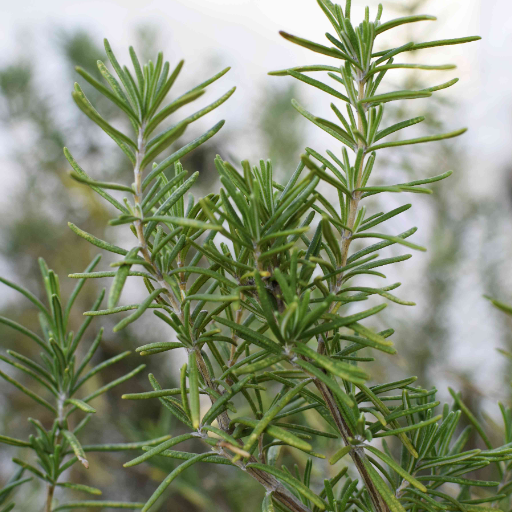
Rosemary plants love heat, sunshine, and soil that drains well. I make it a point to always place my rosemary in spots that receive direct sunlight from six to eight hours per day, as this need is pivotal for its growth. Good drainage complements water dynamics by posing a barrier to root rot; therefore, I tend to opt for sandy- or loam-based soil to ensure healthy roots. Still, keep watering to a minimum, waiting until the top layer of soil feels dry to touch. Another helpful technique is to give rosemary plants some cutting every now and then to promote bushier growth and avoid bitterness as well. Given it can fulfill these basic needs well, it has been an easy feat for me to keep my rosemary plants alive and well all year round.
Choosing the Right Pot for Potted Rosemary Plants
When I think about choosing a pot for potted rosemary, I tend to look at certain key points. Firstly, I look for holes to allow excess water to drain out because rosemary does not like too much moisture. Secondly, I prefer to work with pots made of breathable material, such as terracotta, which keeps soil moisture in check and permits air circulation to its roots. The pot size is quite important, too; I choose one in a size that gives room for root growth but not a large one that could retain water and provide problems to the roots. With these factors in my consideration, I am able to maintain the health condition and happiness of my rosemary.
Optimal Soil and Watering Techniques
I make sure the soil is well-draining and has a bit of sand, following the preferences of rosemary in the natural habitat. Deep watering for sure but rare while allowing moisture to leave the soil between sessions. Overwatering can be very harmful. So I always feel the top inch of the soil to ensure it’s dry before watering up. Furthermore, to avoid stagnant water, I use pots with drainage holes and ensure water can flow away from there. This equilibrium keeps rosemary plants healthy and vibrant.
Growing Rosemary Indoors
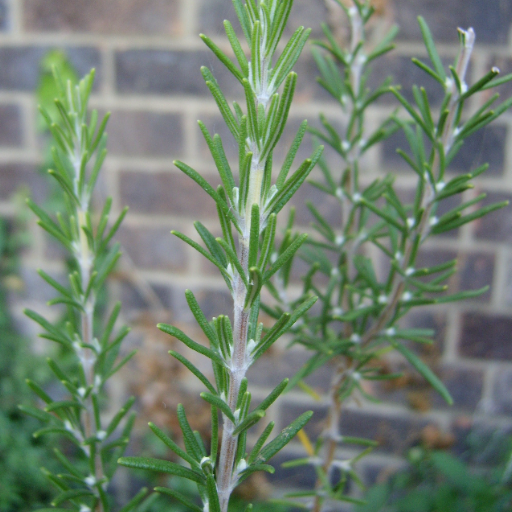
The essence of successfully growing rosemary indoors is to emulate its environment as best as possible. The plant must appreciate enormous sun rays, at least six to eight hours of direct sunlight. Hence, a south-facing window is ideal. Soil that drains well is suitable, or pots with drainage holes are great to ensure the water can exit because the plant is intolerant to overwatering. The soil should be allowed to dry out somewhat between watering, with testing done on the top inch to see if it’s dry to the touch. Good air circulation will also help deter mildew or pests. Adhering to these conditions will give your indoor rosemary a chance at thriving and flourishing.
Creating a Happy Environment for Your Rosemary Bush
I provide ample bright light to create a happy environment for my rosemary bush, preferably from a window facing south to help with its growth. The soil to be used must be well-draining, and so must be the pot – with drainage holes. Rosemary cannot tolerate waterlogging, so watering must be done very sparingly; once watered, I make sure it is dry at least an inch deep on top and that I wait for that to happen before I water it again. Good air circulation is very important, as it minimizes molecules of mildew or potential pests. Keeping such procedures ensures my rosemary bush stays healthy and thriving indoors.
Light Requirements for Keeping Your Rosemary Alive Indoors
A large amount of sunlight is most required by rosemary as an indoor plant. I put mine in the south window where direct sunlight is received from 6 to 8 hours. If natural sunlight is not sufficient, I fulfill the intensity and duration necessarily needed by rosemary with a grow light. By rotating the plant from time to time, I give it even light to the extent that it will never be tilted away in growth. Without the right light, rosemary can grow lanky and weak, so making sure it gets the right light is at the frontline of its care.
Rosemary Plant Care: Temperature and Humidity Considerations
My rosemary thrives when kept with temperature conditions consistent between 60 and 75°F, as it cannot tolerate extreme degrees of cold or heat. Therefore, I never put the plant by drafty windows or heating vents, as those sudden temperature fluctuations can stress the plant. While it prefers moderate humidity, at times indoor air dries out too much, especially during winters. In such cases, I lightly mist the leaves or place a small water tray with pebbles on it to raise humidity. That way, the balance keeps it healthy and full of life.
Planting and Propagation Techniques
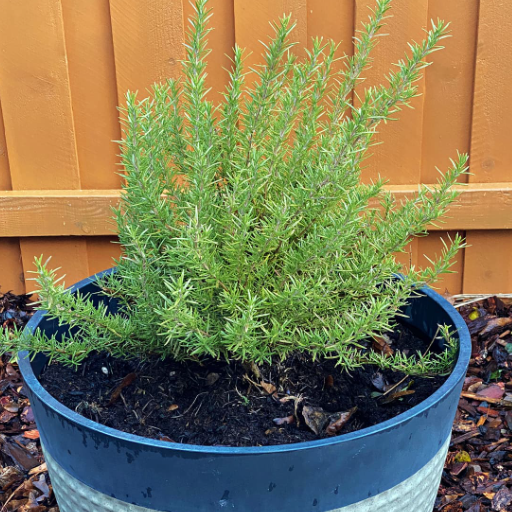
In the planting process, choose a well-draining soil mix, preferably sandy or loamy, so that water does not stay on the surface. Rosemary is a sun-loving herb; therefore, it must be placed under full sun, or if indoors, it can be accommodated by a bright sunny windowsill. Stem cuttings are the best way to propagate! Take a 4-6 inch cutting from a healthy rosemary plant; pull off the lower leaves and place it in water or moist soil. Place the cutting in a warm spot with indirect light. Keep the water or soil slightly moist until roots appear, which usually takes 2-4 weeks. After rooting, plant in a container or garden bed with appropriate spacing for good growing conditions. This easy method should ensure that the plants root well and grow happily.
How to Plant Your Rosemary in a Container
Now, to plant your rosemary in a container, I select one with good drainage that measures at least 12 inches across because it needs room to grow. I fill it with a soil that drains well, preferably one with sandy or loamy traits, and that is slightly acidic, up to neutral. I gently insert the rosemary-rooted cutting or small plant into the soil, making sure its roots are well covered, with the base of the stem sitting just at the soil surface. After this, I water well, but I never overwater. Rosemary likes to be kept on the drier side. I set the container in the sun, where it can get a good 6-8 hours of sunlight each day, and I water only when the soil feels dry to keep it healthy and fragrant.
Types of Rosemary and Their Growing Conditions
Several types of rosemary exist, each having different characteristics. The growing conditions, however, are usually the same. For example, for upright types such as Tuscan Blue and Blue Spires, I make sure the soil drains well and that the sun is shining brightly on them. Creeping rosemary would make for a good rock garden plant or ground cover. Hence, I make sure it has ample room to spread.
Whatever the variety is, I keep them dryly well-drained, for rosemary hates wet soil all its life. I ensure a neutral to slightly alkaline soil pH; hence, if my soil is too acidic, I add lime. I prune my plants frequently to promote heavy growth and maintain their shapeliness. Through these specialized working details, I can give each type of rosemary the finest growing conditions that will help it flourish.
Propagating Rosemary: From Cuttings to New Plants
Rosemary propagation from cuttings is a fairly simple process that can be quite gratifying. First, I select some healthy, non-flowering stems that measure between 4 and 6 inches in length from a good rosemary plant. After stripping the leaves off the bottom half of the cutting, I dip its cut end into the rooting hormone, which speeds up root formation. Next, I put the cutting into some nice moist soil that drains well or set it in a jar filled with water that sits near a sunny window. I keep an eye on it for root formation, ensuring the soil remains slightly moist or changing the water every few days. After the roots are full-grown, they can be transplanted into a bigger pot or garden where they will keep growing with proper care.
Harvesting and Storing Rosemary
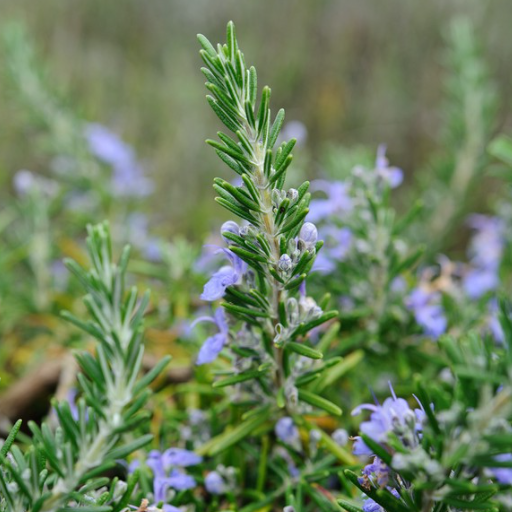
For harvesting rosemary, cutting sprigs with a pair of sharp scissors or pruning shears is the norm, preferably in the morning when concentrations of essential oils are at a peak. Try not to cut more than one-third of the plant at any given time to ensure proper growth. After harvesting, wash off any dirt or debris from the sprigs gently and pat dry. For storing fresh rosemary, lay the sprigs in the fridge wrapped in a damp paper towel, or soak them up dehydrated by hanging them upside down in a dry, airy space. Once the leaves are dry, strip them off from the stem and store them in an airtight container away from direct sunlight to preserve their flavor and aroma.
When and How to Harvest Rosemary
Typically, I harvest rosemary when it is mature and thriving, mostly in the spring and summer, which are best months for vigorous growth. Only one-third will be trimmed so that the plant can regrow well. Harvesting is best done in the early morning with dew already disappeared and before the sun grows too strong, since that is when the oils in the leaves are at their best. The sprigs are cut just above a pair of leaves with a clean, sharp pair of scissors to encourage new growth. Once collected, I give the sprigs a very weak rinse, pat them dry, and either use them fresh, store them in the refrigerator wrapped in a damp paper towel, or dry them for future use. This simple practice offers fresh, fragrant rosemary while keeping the plant healthy and productive.
Methods for Storing Dry Rosemary
In order to dry rosemary effectively, it is necessary to ensure that it be completely dry so that mold does not attack the herb. When the sprigs or leaves feel so brittle that they kind of crumble anytime they are held, the leaves can be stripped from the stems if desired. For storing, I usually use an airtight container-glass jar or vacuum-sealed bag-well preserving the flavor and aroma of the herb. The container is then placed in a cool, dark place, such as a pantry or a spice cabinet. With direct heat or light removed from such places, dried rosemary stays good for an entire year during which period I then have a fresh-tasting herb to use in cooking and seasoning.
Using Fresh Rosemary from Your Herb Garden
First, I rinse the rosemary sprigs under cool water to clear off any dirt or debris. Once dry, I run my fingers downward along the stem to strip away the needle-like leaves from the woody stems. The recipe may call for the leaves to be left whole for garnish or chopped fine to release the oils that bring an earthier, warmer aroma to any dish. They are best fresh in marinades, soups, and roasted vegetables, or a nice scented addition for breads and meats. It is best to use it as soon as possible after harvesting so that the aroma remains.
Overwintering Rosemary
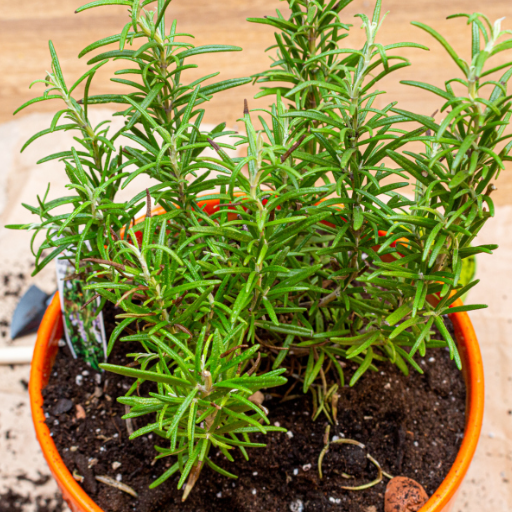
Keeping rosemary alive in winter requires some practicing of a few care tips here and there. Two of the very important conditions for rosemary growth are a well-drained soil and lack of water. The plant does not want to ever be overwatered, during summer, or during winter. In fact, if you have it growing in your garden in an environment where temperatures fall below 20 degrees F or -6 degrees C, I recommend transferring it into a pot and moving it indoors to a sunny spot. That means that the plant needs to receive six to eight hours of sunlight daily from a window or supplemental grow light. In addition, do not place the rosemary anywhere near drafts or heating vents that could stress the plant. Water it sparingly and only when the soil surface dries out, because too much moisture could cause the roots to rot. More or less, the plant can stay healthy and fragrant until spring.
Best Practices for Overwintering Rosemary Indoors
According to some growers, the proper care of wintering rosemary indoors is contingent upon maintaining the parameters of light-water-air. If your rosemary begins shedding its leaves, first check to ensure it is adequately receiving light from a south-facing window or any grow lights for at least six hours daily. Brown or yellow leaves often point to overwatering. I usually wait for the soil to dry before I water again, thus avoiding soggy soils that will cause root rot. Following the same theme, adequate air circulation is another parameter in stopping mold or mildew – so place a small fan near the rosemary for a little air circulation. Done consistently, this helps the rosemary to prosper throughout the winter.
Preparing Your Rosemary Plant for Cold Weather
With preparing rosemary for winter, there are some chief tips I think of as having to be applied. First of all, I want to make sure the plant is in a container that is easy to move inside in case the weather turns too cold. I would then place it on the sunny window because it needs a lot of sunshine, even in winter. As far as watering is concerned, I avoid overdoing it. I wait until the soil feels dry to the touch before watering, and I am careful not to let the roots sit in water. To facilitate airflow and keep mold formation at bay, more often than occasionally, I leave the plant a little space, or I set up a faint air-circulating breeze with a fan. Following these procedures throughout the season will surely result in a happy and healthy rosemary plant.
Signs Your Rosemary Plant is Thriving in Winter
When rosemary is upping its energy during winter, I can name a few clear indications I look for. Usually, the leaves remain vibrant and fragrant with that characteristic pine-like aroma of mine. I really love that. Healthy growth is yet another sign of a vigorous plant for me. Even though it slows during winter, I watch for new shoots or firm, green stems appearing steadily. Then there’s the soil condition: being able to drain well without becoming too dry or soggy allows me to understand that the plant has been kept in a perfectly balanced atmosphere. I will also look for pests or mold: both of which can give the plant unnecessary stress. Taken together, these observations give me assurance that my rosemary is happy and thriving throughout the colder months.
References
-
Gardenary: Offers practical tips for keeping rosemary plants healthy, including soil maintenance and care routines. Read more here.
-
The Kitchn: Covers essential aspects of growing rosemary, such as soil requirements, sunlight needs, and pH levels. Explore the guide here.
-
Elle Decor: Provides a comprehensive guide to rosemary care, emphasizing the importance of full sun and proper soil conditions. Check it out here.
Frequently Asked Questions (FAQ)
How do I keep my rosemary plant happy indoors during the winter?
To keep your rosemary plant happy indoors during the winter, place it near a south-facing window where it can receive several hours of sunlight each day. Ensure the indoor environment is not too humid, as rosemary prefers well-drained soil and can be susceptible to root rot if overwatered. Using potting soil with good drainage will help maintain ideal conditions. Keep the temperature consistent, avoiding drafts, and consider using a grow light if natural light is insufficient. Regularly check for pests and ensure the pot has drainage holes to prevent excess moisture.
What is the best way to propagate rosemary?
To propagate rosemary, you can either start rosemary from seed or take cuttings from a healthy stem. If using cuttings, select a stem that is at least 4 inches long and remove the leaves from the lower half. Place the cutting in potting mix or water until roots form, typically within a few weeks. Keeping the cutting in a warm location with indirect light will encourage growth. Once roots develop, you can transplant the new plant into a well-drained container or garden bed. Propagating rosemary is a rewarding way to expand your herb garden.
What are the types of rosemary I can grow in my garden?
There are several types of rosemary that you can grow in your garden, each with unique characteristics. Common varieties include ‘Tuscan Blue,’ which has a strong flavor and blue flowers, and ‘Prostratus,’ known for its trailing habit, making it ideal for containers. Some rosemary plants can grow up to 6 feet tall, while others remain compact. Choose a type that suits your space and climate; most types are drought-tolerant and thrive in well-drained soil. Additionally, consider the flavor profile you desire for culinary uses, as some varieties are more aromatic than others.
How do I properly prune my rosemary bush?
Pruning your rosemary bush is essential for maintaining its shape and encouraging healthy growth. The best time to prune is in the spring, just before the new growth begins. Use sharp, clean scissors to cut back about one-third of the plant, focusing on dead or woody stems. Avoid cutting back into old wood, as rosemary may not regenerate from that area. Regular pruning will help keep your rosemary bush compact and prevent it from becoming leggy. Additionally, this practice can promote the growth of new leaves and flowers, enhancing the plant’s overall health.
What is the best way to store rosemary after harvesting?
After harvesting rosemary, the best way to store it is to allow the sprigs to dry completely before placing them in an airtight container. You can dry rosemary by hanging it upside down in a warm, dry place with good airflow or using a dehydrator. Once dried, store the rosemary in a cool, dark area to preserve its flavor. Fresh rosemary can be kept in the refrigerator for a short period, wrapped in a damp paper towel. If you need to store rosemary long-term, consider freezing it in ice cube trays with water for easy use in cooking.
How can I grow rosemary in containers?
Growing rosemary in containers is an excellent option for those with limited garden space or who want to keep the plant indoors during the winter. Choose a pot with drainage holes and fill it with a well-drained potting mix to prevent waterlogging. Place the container in a sunny location, ideally where it can receive at least 6 hours of sunlight each day. Regularly check the moisture level of the soil, as rosemary prefers to dry out slightly between waterings. When the plant outgrows its container, you can repot it into a larger pot or divide it to create two plants. Container-grown rosemary can thrive indoors or outdoors with proper care.





